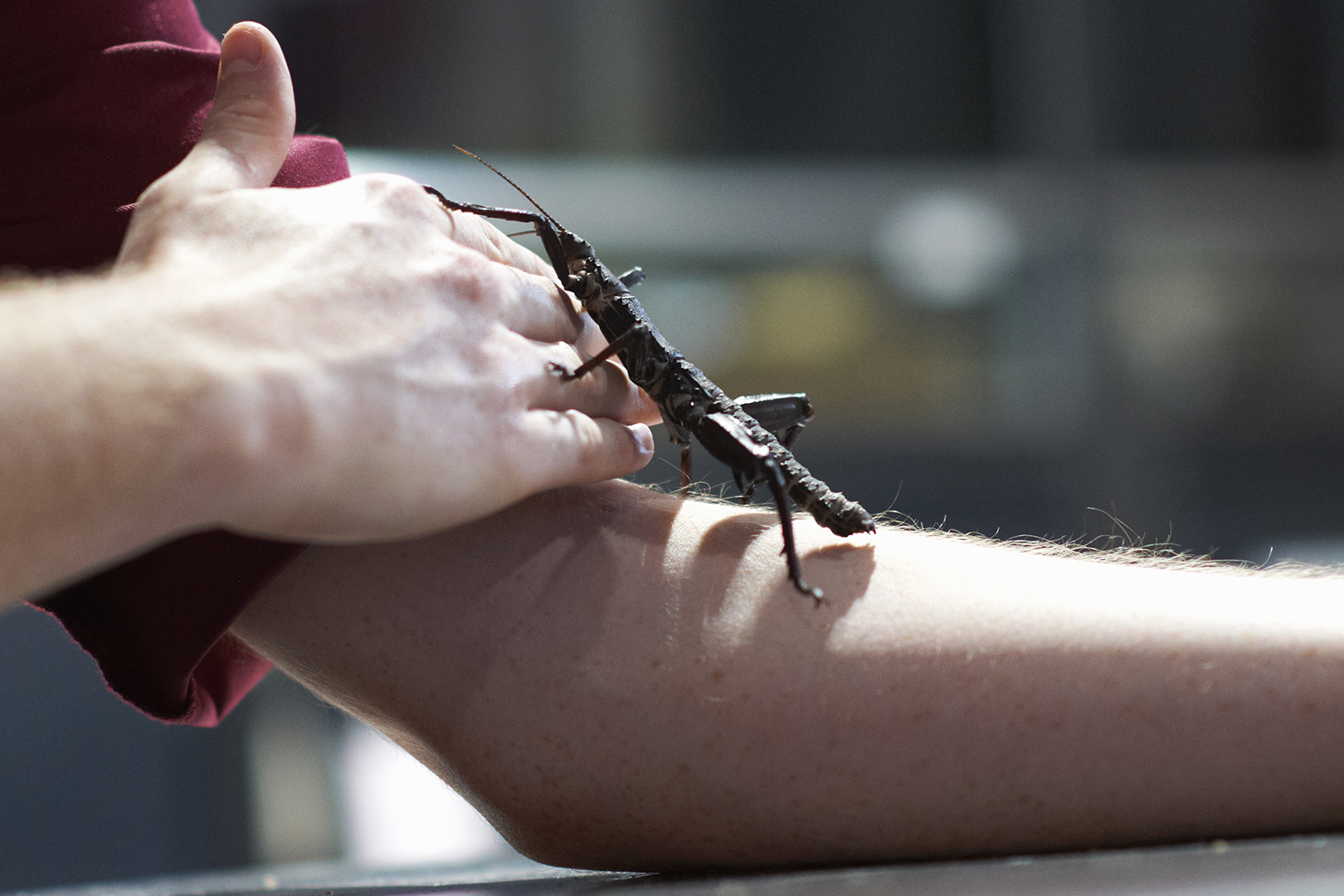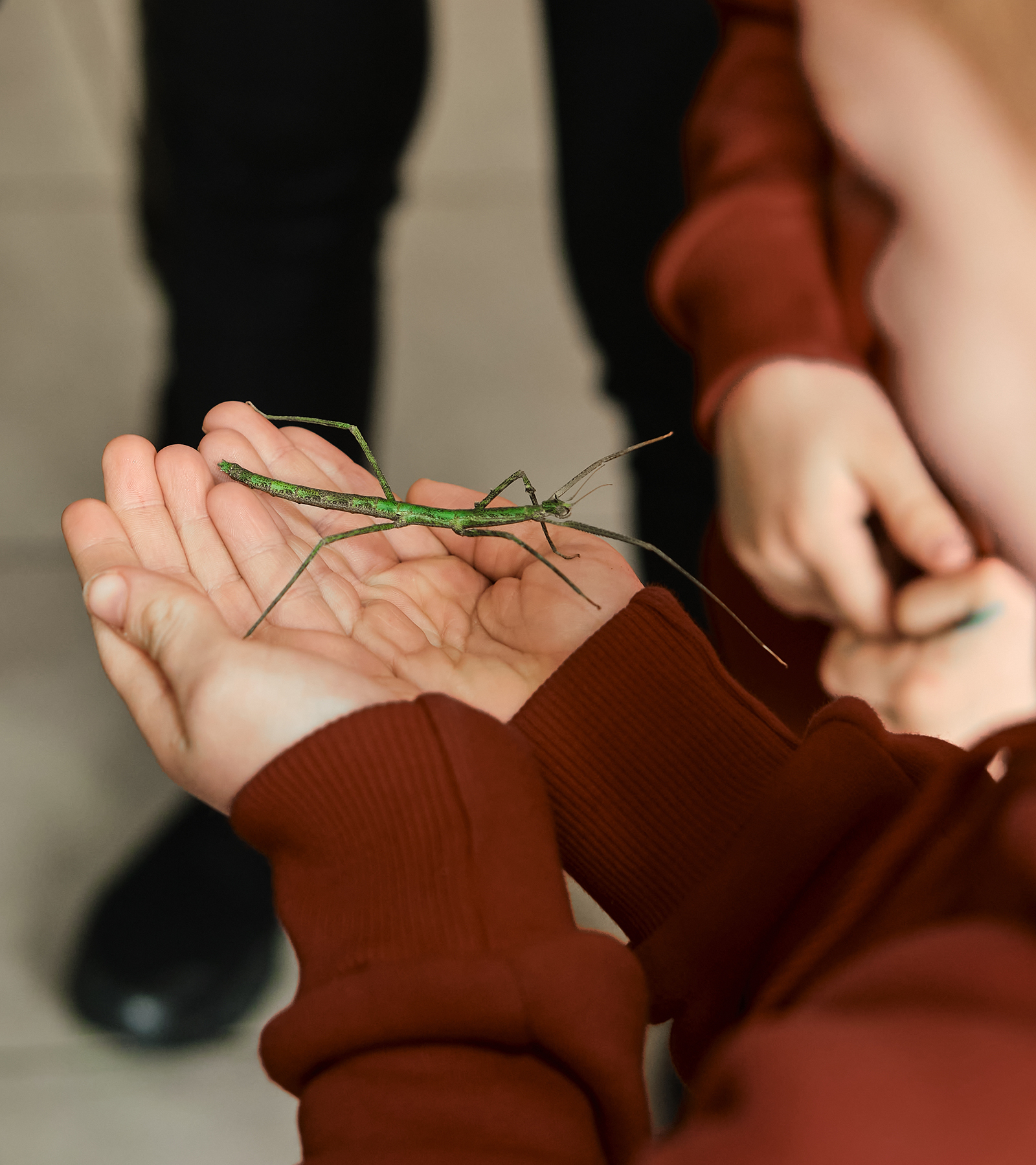
Walking stick insects, commonly known as stick bugs, are fascinating creatures that have drawn the attention of many due to their unique twig-like appearance. The internet is full of pictures of these docile creatures climbing upon willing hands, which made me wonder – is it possible for walking sticks to bite humans?
Walking stick bugs are generally harmless to humans and are not known to bite or sting. They rely heavily on their remarkable camouflage abilities to avoid predators and typically prefer to flee when they feel threatened rather than defending themselves aggressively.
In any case, it’s essential to handle these delicate creatures with care to avoid causing them unnecessary stress or injury.
Nature of Walking Sticks
Physical Characteristics
Walking sticks, also known as stick insects, are truly fascinating creatures. With their body structure and coloration, they closely resemble real twigs or branches, making it difficult for predators to notice them. They can grow from 1 to 12 inches in size, depending on the species (National Wildlife Federation). They have long, slender legs, antennae, and bodies, which all contribute to their effective camouflage.
Habitat
I was surprised to learn that walking sticks can be found all over the world. They usually live among plants, perfectly blending in with their surroundings. Their ability to mimic a walking stick, combined with their superb camouflage, makes them difficult to spot.
Behavior
Walking sticks are friendly and docile creatures, not aggressive towards humans, which makes them great pets (h-o-m-e.org). Some species even have the ability to sway back and forth to more closely resemble a twig moving in the wind. In the event that their camouflage fails, certain species like Eurycantha horrida can expel a foul-smelling fluid as a defense mechanism. That’s about as nasty as these bugs can get!
Walking Sticks and Biting
Do They Bite?
Based on my research and Pest Keen‘s expert analysis, walking stick insects do not commonly bite or sting humans or other insects. They are herbivorous creatures that rely heavily on their exceptional camouflage abilities to avoid being eaten by predators.
Although their primary defense mechanism is their ability to blend in with their environment, some walking stick species have additional means of protecting themselves. For instance, the American stick insect can spray an acidic compound from glands on its thorax when threatened (DesertUSA).
Potential Reasons for Biting
While it is uncommon for walking stick insects to bite, it could occur in rare situations when they feel threatened or cornered. These insects have limited defense mechanisms and would only engage in biting as a desperate attempt at self-defense. Nevertheless, a walking stick’s bite is not venomous and typically feels like a small needle pinch at worst.
If a person accidentally picks up or touches a walking stick insect and it feels threatened, the insect may release a repelling substance or try to bite in self-defense. However, it is essential to remember that their bites are not poisonous and usually cause no severe harm to humans.

Alternative Defense Mechanisms
Walking sticks possess various fascinating defense mechanisms that protect them from predators. Let’s have a look at two predominant alternative defense mechanisms that these insects use: Camouflage and Chemical Defenses.
Camouflage
In my experience, one of the most effective ways walking stick bugs protect themselves is through their incredible ability to blend in with their surroundings. Their body structure and coloration resemble real twigs or branches so strongly that they often go unnoticed by birds or other predators. This natural camouflage allows them to hide in plain sight, ensuring their survival in the wild.
Chemical Defenses
While camouflage is their primary line of defense, walking stick bugs also employ chemical defensive strategies when necessary. Some species are capable of releasing a foul-smelling liquid from their bodies to deter potential predators. This unpleasant odor works effectively to dissuade any unwanted attention, keeping the insect safe from harm.
By utilizing these alternative defense mechanisms, I’ve observed that walking stick bugs greatly reduce their chances of falling prey to other creatures in the wild. Their resourceful adaptation to various threats showcases the incredible resilience and ingenuity of these fascinating insects.
Preventing and Treating Walking Stick Bites
As an insect enthusiast, I thought it important to address any concerns regarding walking sticks because I’d hate for them to get a poor reputation! The good news is that these fascinating creatures are generally harmless and not known to bite humans. However, certain precautions and treatments can still be taken to ensure a safe and enjoyable experience with these insects.
Prevention Tips
When handling walking sticks, always make sure to treat them with caution, as they are quite delicate. Carefully lift them from the body rather than the legs to avoid causing any injuries or breaking their legs. Allow them to crawl onto your palm and walk on your fingers, minimizing any pressure or force that could cause harm. If you are unsure about handling a walking stick or have concerns about allergies, it’s best to observe them from a distance or use gloves.
First Aid
In the unlikely event that you experience discomfort or irritation after handling a walking stick, it is crucial to attend to any symptoms promptly. Washing the affected area with soap and water is my immediate course of action. If any signs of an allergic reaction, such as swelling, redness, or difficulty breathing, occur, I would recommend seeking medical attention immediately.
Treatment
As walking sticks are not known to bite or cause harm to humans, there is generally no need for any specific treatment. However, if any irritation or allergic reactions persist, it would be best to consult a healthcare professional for advice and possible treatment options.
Conclusion
Walking stick insects are fascinating creatures with unique camouflage abilities. Their primary defense mechanism is to blend in with their surroundings, making them nearly invisible to potential predators. As a result, walking sticks generally do not need to rely on biting as a form of protection against threats.
These insects are primarily herbivorous, meaning they feed on plants and do not typically bite humans or other insects. According to TipsFolder.com, a walking stick bug bite feels like a small needle pinch, but it is not dangerous or life-threatening.
Some walking stick species, such as the American stick insect, have developed additional defense mechanisms. For example, they can spray a milky, acidic compound from glands on their thorax when threatened. This secretion can cause skin irritation or even blistering in some individuals, but it is not a bite.
I hope this information reassures you that walking sticks do not pose a significant threat to humans. These fascinating insects prefer to use their unique camouflage abilities and, in some cases, chemical secretions to protect themselves rather than resorting to biting behavior.
Driven by a passion for those tiny creatures that rule our world, we at Bug Domain strive to be your go-to resource for information on insects.




